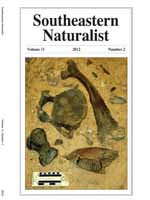This is the first floristic and ecological evaluation of small pond systems developed over different periods of time after seized kaolin mining operations. Assessment of the total algal assemblage was used to infer environmental conditions of the aquatic habitats and also provided information about the ecological health and integrity of the aquatic ecosystems. The main objectives of this study were to document algal community composition and discern the amount of time it takes for a mined pond to reach its high biodiversity of primary producers. Winter and summer samples were taken from a pond developing for two years after removal of kaolin and from a pond that was thirty years old. Both pond systems contained rich algal communities predominantly from Cyanobacteria, Bacillariophyta, and Chlorophyta; however, the 30-year pond had higher Shannon-Wiener diversity, richness, and evenness values in both sampling seasons. In winter, filamentous Zygnematales dominated algal communities in the 2-year pond, while the 30-year pond community was dominated by diatoms. In both sites, the most taxon- rich group was green algal representatives of Desmidiaceae. In summer, potentially toxin- producing filamentous Cyanobacteria of the Nostocales were recorded in the 2-year pond, while the 30-year pond had higher average algal cell evenness and few toxic Nostocales. The average abundance of 11 diatom species, seven green algae, and one representative each of Euglenophyta, Cyanobacteria, and Cryptophyta resulted in less than 20 percent overall similarity between the two ponds. Our findings suggest that after two years of development potentially harmful kaolin residues are removed by natural sorption processes and do not negatively influence primary producers. However, stabilization processes in those manmade ecosystems may potentially take more than two years to produce high species richness and prevent toxic algal blooms.
How to translate text using browser tools
1 June 2012
Algal Community Composition from Kaolin Recovery Ponds Located in Middle Georgia
Joseph N. Dominy,
Kalina M. Manoylov
ACCESS THE FULL ARTICLE

Southeastern Naturalist
Vol. 11 • No. 2
June 2012
Vol. 11 • No. 2
June 2012




